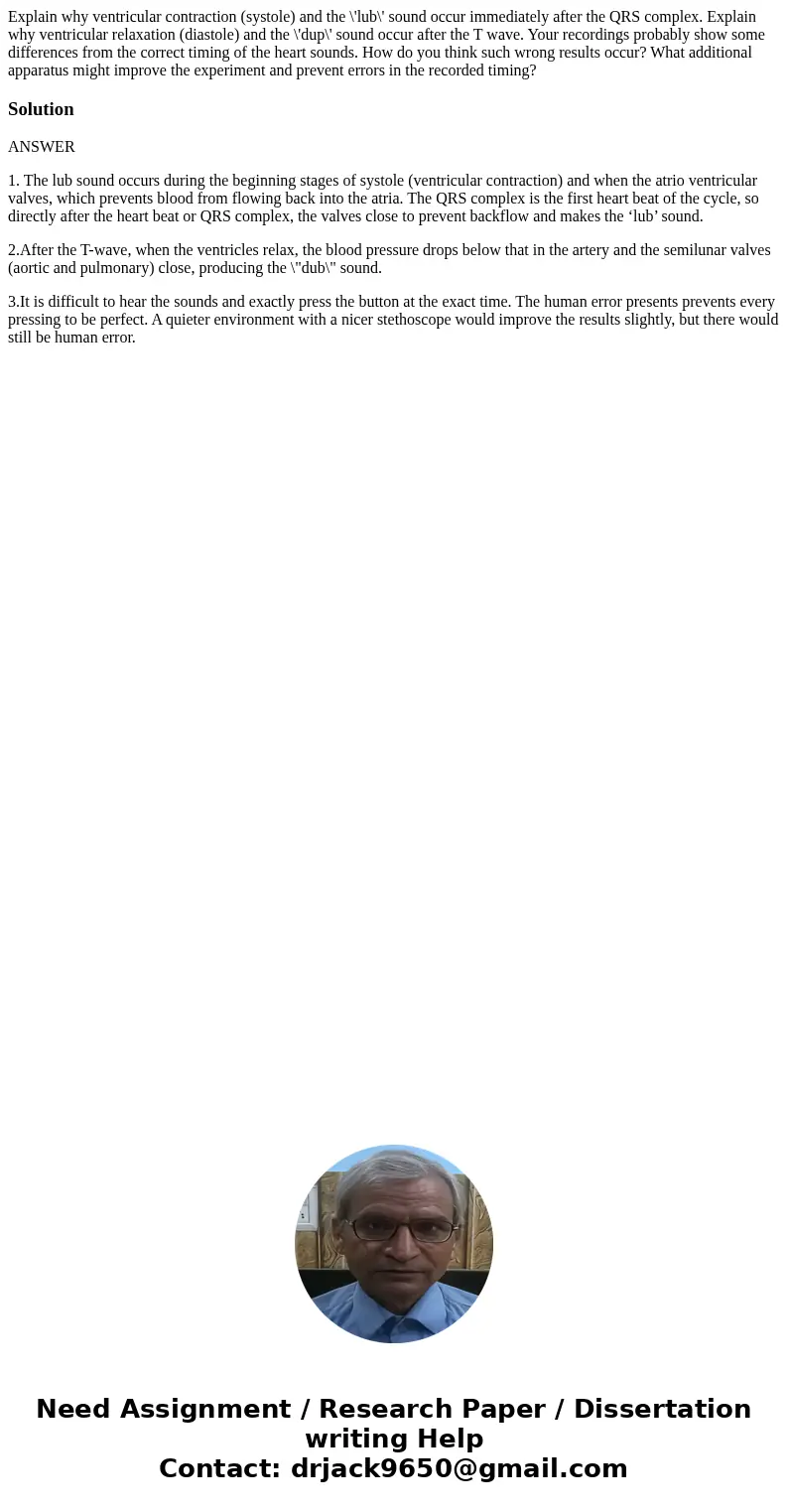Explain why ventricular contraction systole and the lub soun
Solution
ANSWER
1. The lub sound occurs during the beginning stages of systole (ventricular contraction) and when the atrio ventricular valves, which prevents blood from flowing back into the atria. The QRS complex is the first heart beat of the cycle, so directly after the heart beat or QRS complex, the valves close to prevent backflow and makes the ‘lub’ sound.
2.After the T-wave, when the ventricles relax, the blood pressure drops below that in the artery and the semilunar valves (aortic and pulmonary) close, producing the \"dub\" sound.
3.It is difficult to hear the sounds and exactly press the button at the exact time. The human error presents prevents every pressing to be perfect. A quieter environment with a nicer stethoscope would improve the results slightly, but there would still be human error.

 Homework Sourse
Homework Sourse